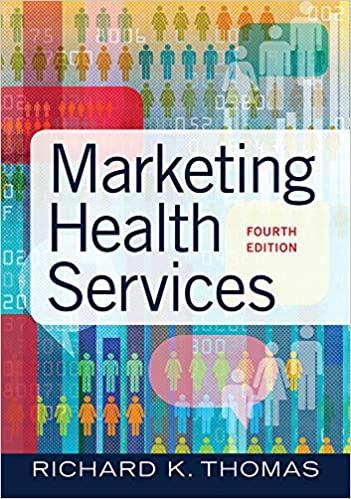Many people who might benefit from hearing aids do not wear them. Further, those who might benefit
Question:
Many people who might benefit from hearing aids do not wear them. Further, those who might benefit from surgery are even more unlikely to present for treatment. Among adults aged 18 years or older with impaired hearing, 78 percent do not own a hearing aid. As the US population ages, the need for hearing assistance will become nearly universal—but even today among the hearing impaired aged 65 years or older, 61 percent do not wear hearing aids. Research has found that although people readily agree to wear eyeglasses to correct their vision, take pain relievers to alleviate aches, or walk with a cane, the prospect of wearing a hearing aid is difficult for them to accept.
The hearing and speech communications literature suggests that use of a hearing aid carries a stigma that implies the wearer is old, feeble, and incompetent (Wallhagen 2009) and describes the denial and depression that people associate with hearing loss (American Psychological Association 2015). In addition, hearing loss, if not addressed with hearing aids, can lead to greater dependence on a spouse and withdrawal from social events. People do not want to admit their hearing loss to themselves because it connotes aging; they do not want to admit it to others for fear of being viewed as incompetent.
Given all these considerations, when Business Week featured a hearing aid manufacturer in its Annual Design Awards, the product receiving acclaim was tiny and said to “nestle discreetly in the ear canal.” Hearing aid sales surged when a prominent person publicly acknowledged that he had begun wearing one, as hearing aids were perceived as more acceptable when associated with a popular and virile individual rather than one who was old and feeble.
A product with such a negative image as hearing aids clearly presents a challenge for marketers interested in stimulating sales. Research conducted to determine how to induce more favorable attitudes toward these personal, stigmatized products assessed the applicability and effectiveness of integrated marketing communication in the promotion of hearing aids. In addition, the research looked at whether a stigmatized product might best be approached through multimodality approaches, thereby reinforcing the advertising message.
Questions
1. What challenges are faced by those trying to promote hearing aids to the consumer market?
2. How do marketers test the effectiveness of a promotional message?
3. What type of message appeared to resonate most with consumers and why?
4. Did mass media or private media fare better in terms of promotional results?
5. What characteristics of integrated marketing contributed to the success of this campaign?
Step by Step Answer:






